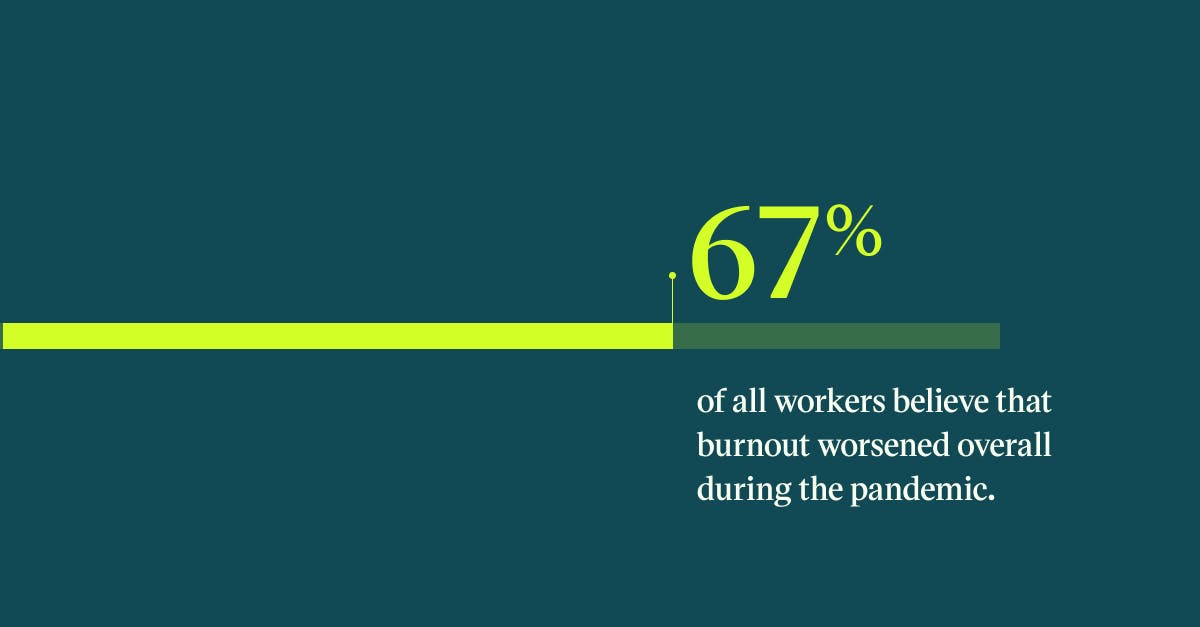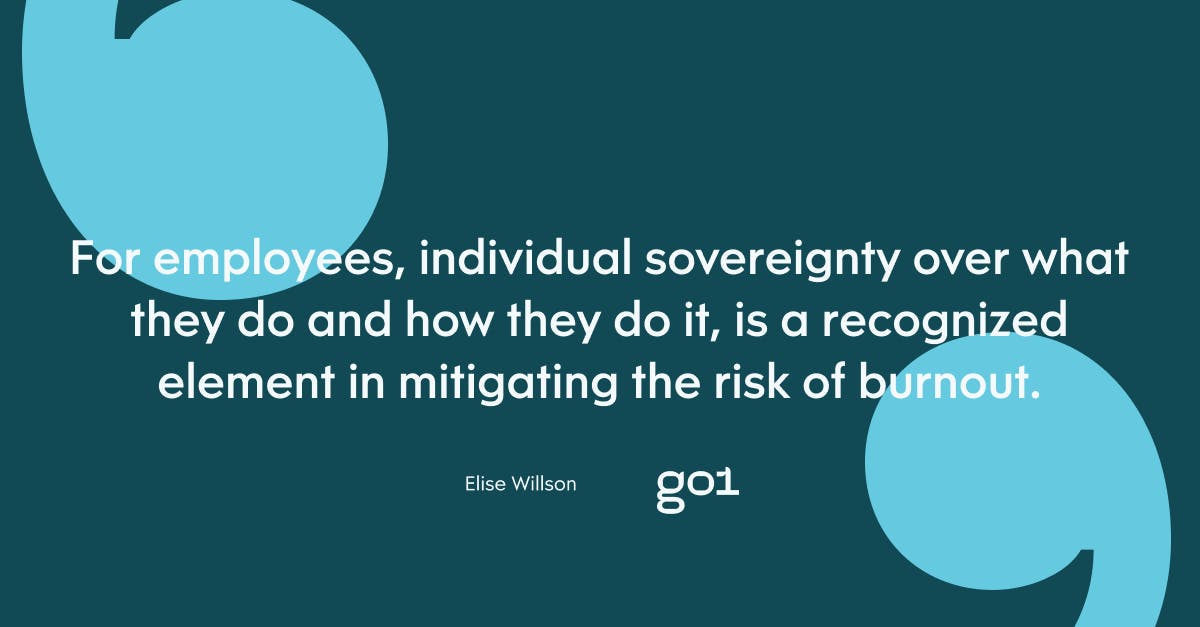
Is a shiny tech stack the key to reducing workplace burnout?

Many of us could be considered technical wizards these days. Accelerated by the pandemic, the digital surge within workplaces sees us endlessly toggling between platforms, devices, and notifications.
This environment of endless screens, truly a modern house of mirrors, could see our digitally fatigued selves sigh at the thought of adding more to our operating tech stack.
Here, we ask that you take a curious dive with us into how a workplace tech stack could in fact positively impact individual risk of burnout.
What is a tech stack?
A tech stack can be described as the digital structure behind a business. This structure includes not only integrations for getting a product or service to market (think online payment, project management tools, customer success software etc.), but also any tech that supports business operations as a whole (HR, emailing, payroll, compliance training, social chat etc.).
The pandemic, and associated push for hybrid and remote work environments, meant many workplaces rapidly expanded their tech stacks.
The current state of workplace burnout

Alongside the growth of tech integrations and software over the last few years has been the understanding of burnout and its increasing prevalence in the workplace.
Maslach Burnout Inventory recognize burnout when the following three factors are present at the same time:
- Emotional exhaustion
- Depersonalization (or disassociation from role)
- A diminished sense of personal accomplishment
67% of all workers believe that burnout worsened overall during the pandemic. Gen Z workers were found to be struggling significantly, with research from Deloitte finding 46% of them feeling “stressed or anxious all or most of the time”.
You can read more in our article ‘What can we actually do about burnout’.
How can a tech stack be linked to burnout?
As the ways in which we work become more linked to technology, how well that technology works alongside us will increasingly impact our workplace experience.
When a tech stack is clean and beautifully integrated, working in the flow and understanding the purpose of our work becomes more possible.
Incidentally, these are two key metrics for mitigating the risk of burnout.

Working in the flow
The buzz phrase of technologically integrated workplaces, ‘working in the flow’ has become the engagement and productivity goal of the digital working era.
42% of remote workers and 35% of onsite workers say that they are easily distracted on the job. With the sharp increase of software and platform use, much of our working hours can be swallowed by task-switching and reactive focus as we respond to constant notifications and pop ups.
Longitudinal studies have found that ‘flow’ can be interpreted as a protective factor against burnout symptoms. Simultaneously however, burnout symptoms can be interpreted as a factor inhibiting flow.
Essentially, achieving flow at work will reduce the risk of burnout for your employees, though if they are already experiencing burnout, reaching that point of ‘flow’ will be an uphill battle.
Utilizing seamless tech integrations that support a ‘working in the flow’ environment, not only increases the engagement and productivity of your teams but also protects them from the risk of burnout.
Seamless is the key here, along with ‘less if often more.’ Optimizing fewer tools that cover more functionalities will reduce platform-switching and enable improved adoption and engagement.
(We recently looked closer at 'learning in the flow' which you can catch up on here)
Purpose at work
A common and understandable concern within a digitally linked workplace is the reduction in autonomy for individuals.
Indeed for employees, individual sovereignty over what they do and how they do it, is a recognized element in mitigating the risk of burnout.
Here we return to the case for purposeful and empowering technical integrations. Ones which remove avoidable blocks and distractions, and foster capacity and connection within collaborative teams.
BetterUp’s Connection Crisis Report highlighted the importance of colleague connection to improve the whole-life wellbeing of employees. Sadly, within their research, 38% of workers stated they do not trust their co-workers and 43% do not feel connected to their co-workers.

When diversifying or building upon a tech stack we can see the opportunity to simultaneously address a workplace’s burnout risk mitigation.
The platform and integration options for any business are endless and will only continue to increase. Each tech piece in a stack needs to be carefully considered in its ability to not only address an operational goal, but its potential (or lack thereof) to simplify the flow of work and empower employee purpose.
Working in the flow and workplace psychological safety both continue to be essential learning subjects here at Go1, and we are passionate about helping organization's find solutions and growth in these areas.
For more insights, subscribe to the Go1 newsletter to stay on top of all the latest L&D trends. Or, you can book a demo today to find out how Go1 can help with your team’s learning needs.




